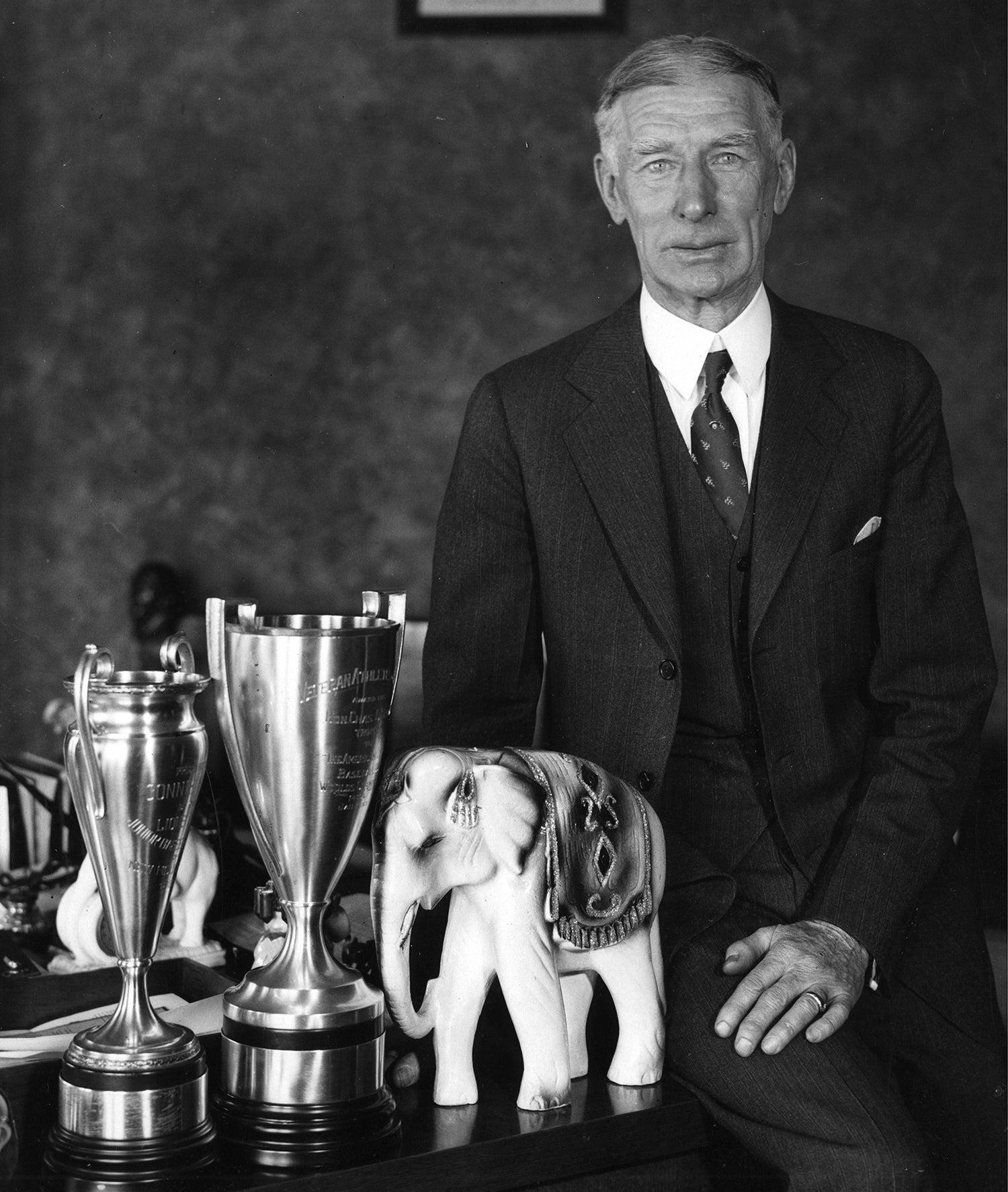- Home
- Our Stories
- Lou Gehrig hits four consecutive home runs
Lou Gehrig hits four consecutive home runs
Since making his debut in 1923, Lou Gehrig – despite his extraordinary talent and offensive production – often shared the spotlight with his New York Yankees teammate Babe Ruth.
But on June 3, 1932, Gehrig hit a home run in his first four at-bats against the Philadelphia Athletics. Though Bobby Lowe and Hall of Famer Ed Delahanty had each hit four home runs in a contest during the 1890s, no one, not even Ruth, had accomplished the feat before in baseball’s modern era.
From 1929-1931, when his A’s captured three consecutive American League pennants, pitcher George Earnshaw was among the game’s best, averaging 22 wins per season. But this particular matchup at Shibe Park was one of the worst outings of his career, thanks in large part to Gehrig. In the first inning, Gehrig launched a two-run homer into left-center field. Then, Gehrig followed up with solo homers off Earnshaw in the fourth and fifth frames.
By the time Gehrig came to the plate again in the seventh inning, exasperated A’s manager Connie Mack had pulled Earnshaw. Instead of sending Earnshaw to the showers, Mack made the pitcher sit next to him and watch reliever Roy Mahaffey pitch to Gehrig. When the Iron Horse launched his fourth homer, this time to right field, Earnshaw turned to his manager.
“I see,” Earnshaw said to Mack, “Made him change direction.”
Though Earnshaw gave up seven runs and five round-trippers, he wasn’t the only pitcher to have a rough day. In fact, the Yankees and Athletics exploded for an offensive display that hasn’t been seen since. The Bronx Bombers collected 50 total bases en route to their 20-13 victory, a modern-day record for one team.
Future Hall of Famers Mickey Cochrane, Earle Combs, Jimmie Foxx, Tony Lazzeri and Ruth all homered, with Lazzeri hitting for the cycle. Gehrig’s 16 total bases, meanwhile set a major league record, since surpassed by five other players. After grounding out in the eighth inning, “Larrupin’ Lou” nearly added to his incredible total in the ninth before Al Simmons made a spectacular diving catch on his deep drive to the warning track.
With the victory, Gehrig and the Yankees improved to 30-13 and would go on to win the AL pennant and the 1932 World Series. Though he clubbed 41 homers and drove in 137 runs that season, the mighty Ruth, at age 37, was perhaps beginning to show signs of decline. As Gehrig’s performance at Shibe Park demonstrated, the Yankees would soon belong to the Iron Horse.
“Lou Gehrig, long accustomed to play(ing) second fiddle to the one and only Babe Ruth, today has carved himself a place in baseball’s permanent record,” wrote Associated Press reporter Gaye Talbot in his game recap, “the result of a home run spree never equaled by his illustrious teammate, or by any other batsman in the last 38 years.”
Matt Kelly was the communications specialist at the National Baseball Hall of Fame and Museum
Support the Hall of Fame
Mentioned Hall of Famers
Related Stories

#CardCorner: 1977 Topps Mark Fidrych

#CardCorner: 1987 Donruss Mike Krukow

Albert Belle’s numbers earn him a place on Today’s Game Era ballot

Sutton signs with Astros

#CardCorner: 1993 Topps Kevin Mitchell

Baseball, boxing intersected famously at Forbes Field in 1941

2007 Hall of Fame Game























